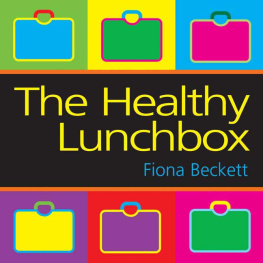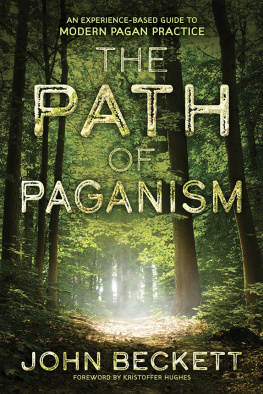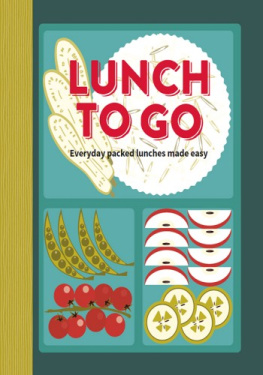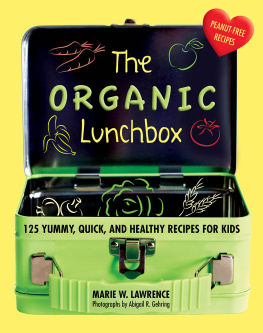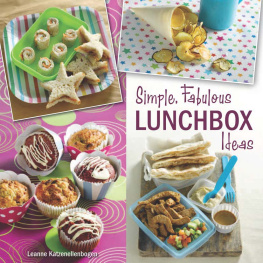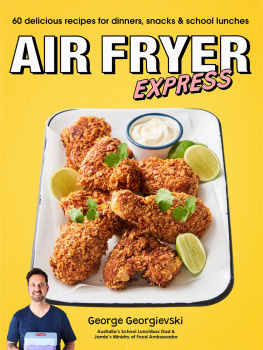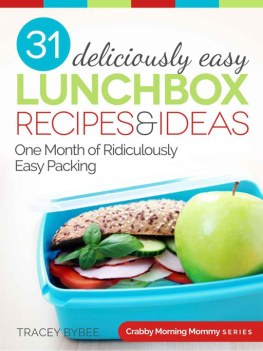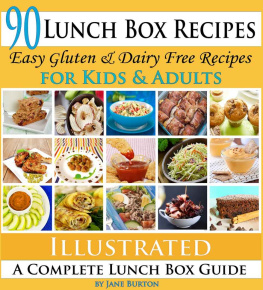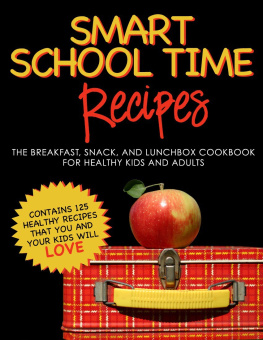If your child takes a packed lunch to school every day, by the time they leave at 16 you will have prepared well over two thousand lunchboxes. Considerably more if you have several children. Combine that with the pressure of seeing them off every morning and getting yourself out to work and you can see why so many parents take the line of least resistance and send their kids off with packets of crisps and chocolate bars in their boxes.
Lunch however is a critical meal on which your child depends for a third of their daily nutritional requirements so its not an exaggeration to say that how well your child does at school depends on what you provide for them in their lunchbox. If you wouldnt dream of eating yourself what your child takes to school youre almost certainly giving them the wrong things...
Im not underestimating the difficulties of introducing changes particularly if you have children with allergies and intolerances or rigid ideas about what they like and dislike. But what Ive tried to do in this book is to offer some new and inspiring ideas in the form of 10 different types of lunchbox. As youll see from the way the lunchboxes are organised theyre based with one or two exceptions on themed approaches to food rather than strict age groups. After all some 5 year olds are much more open to new foods than some 15 year olds.
Youll find the low-down on the lunchboxes on and the recipes for the suggested meals are on the pages following. They are all cross referenced so for example you can see that hummus listed in a number of the lunchboxes is marked with * to show there is a recipe for it in the book.
The contents of the lunchboxes I have created shouldnt in any way be regarded as rigid. A teenage girl may fancy the little fruit jellies in My First Lunchbox or the fishy hummus in The Big Dipper. A teenage boy wont say no to the Chewy Banana Flapjacks in the Green Lunchbox. Children who eat wheat may well enjoy the Jewelled Rice Salad in the Free From section and an adventurous 7 year old will probably love the Cajun burgers in the Hero Lunchbox. I hope his parents will too.
Im not of course suggesting you should spend every evening whipping up culinary masterpieces but if you take a holistic view of the familys diet seeing evening meals as an opportunity to create leftovers for the next day youll find its surprisingly easy to make improvements not only in your childrens but in your own lunchtime eating habits too. You will, of course, make life immeasurably easier for yourself if all the family members eat the same meals (see Lunchbox Psychology ). The idea that children need separate and different food choices is a brilliant strategy on the part of food manufacturers to increase the amount you spend on the family shopping basket each week.
Good shopping, in fact, is what good eating depends upon. Even if you make none of the recipes in this book but if you choose the products you buy more carefully and incorporate a greater amount of fresh fruit and vegetables into your childs diet, youll be doing them a huge favour.
Finally, the good news is that in the current climate you stand a much better chance of making a healthy lunchbox acceptable to your child than you would a couple of years ago; there is a huge amount of choice and many supermarkets stock healthy and organic ranges now as a matter of course. Also you have the support of both government and schools in your crusade as they, at long last, are determined to see children eat more healthily.
Fiona Beckett


A recent survey by the Food Standards Agency showed that 9 out of 10 children took packed lunches to school that were too high in saturated fat, sugar and salt. It doesnt surprise me. You only have to look at the sections of the supermarket shelves that are devoted to food that is targeted at kids, particularly snacks, confectionery and dairy products, to see why.
The shocking truth is that the majority of the products promoted for lunchboxes couldnt be less suitable. Fruit-flavoured dairy products that contain little or no fruit and far too much sugar. Bars that are far too sweet and simply give a short-term sugar rush. Cold meats and cheese products that contain scant amounts of lean meat or cheese and far too much salt and chemical additives. Drinks that amount to little more than sugared water.
Worst of all are the ready-made lunchboxes with lengthy shelf lives. The companies who make them cynically give the impression by listing the vitamins and minerals theyve added that theyre balanced and healthy but with their total absence of fresh ingredients theyre anything but. Its almost got to the stage where if the product has a silly name and cartoon character on the pack youd be well advised to steer clear of it.
Even products that appear more wholesome are in many cases less than ideal. Apparently healthy cereal bars are often lamentably low in fruit or fibre. Some fruit juices needlessly contain added sugar. Low fat crisps that are still way too high in saturated fat. No wonder the average parent is confused.
Lunch is a vital pit-stop during the school day, an opportunity to restore flagging energy and boost concentration. Children who dont eat a proper meal struggle to take in information in the second half of the day and may suffer from behavioural problems. Their overall health can also suffer if they regularly do without key vitamins and minerals like calcium and iron. A lack of iron, for example, can easily make teenage girls anaemic, listless and depressed.

